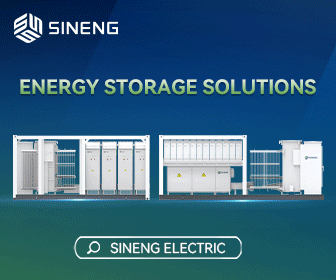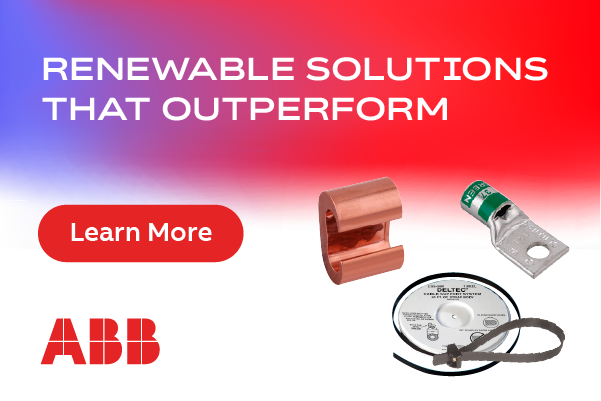Charging the Marine Industry for Tomorrow's Demand
The demand for sustainable solutions is a relatively new concept in the maritime and shipping industry.
Historically, the marine and shipping market segment has fallen under the radar on policy discussions regarding carbon footprint reduction, but there has been a recent internal and external push on the industry to find ways to rectify their environmental impact. Maritime activity accounts for approximately 3 percent of global greenhouse gas emissions annually. The International Maritime Organization, a United Nations agency responsible for regulating shipping, has set a global target to cut annual emissions by at least 50 percent by 2050, from 2008 levels. Vessel electrification is widely considered to have a strong potential to significantly reduce this figure.

Environmental and cost benefits of emission-free, electric vessels compel many marine vessel owners to seek electrification solutions for both new ship builds and existing diesel vessels. However, this recent influx in electric ships entering the market highlights a series of unique challenges for marine chargers at port.
Compared to other transportation market segments, maritime has an exceptionally broad operational profile - from long-distance large container ships, to small passenger vessels that ferry short distances. There is no one-size-fits-all solution when it comes to marine chargers. These demands vary throughout the entire industry, and can even differ within segments of the industry.
For instance, the degree of electrification can vary from ship to ship based on the level of equipment conversion the owner opted for (from retrofitted systems to full teardown and replacements). The conversion market has become one of the largest growing sectors in the industry as a large majority of owners are looking for quick, easy ways to electrify vessels operating today.
Building a new vessel is another option available to owners. In North America, vessels typically have a 35- to 40-year lifespan; it's worth noting that if you're considering a new-build project, it might take a couple years from concept to delivery of the vessel. This is why it's important for owners to make sure the vessel not only meets the regulatory and operational demands for today, but also for tomorrow. Many owners prefer to update their existing equipment, which may require custom chargers to meet their vessel's specific electrical demands.
One of the biggest challenges for these chargers stems from the short connection issue within the design. While docked, ships remain mobile on the water, continuously moving in three different directions, which makes it difficult to establish a secure shore-to-ship power connection. This tedious connection process can be detrimental for cargo and passenger ships, both of which have imposed strict time limitations at each port. Vessel owners often spend more time with electrification companies discussing how their vessel will acheive that shore-to-ship power connection, than any other part of the design.
 Some standards have already been established for these marine chargers, and the connection itself could eventually become standardized. In the United States, many marine chargers use industry-approved IEC standards. However, most ships require customized connection solutions due to reasons such as the vessel mission, conditions of operations, environmental impact, and more. Additionally, the US Coast Guard subjects chargers to additional approvals, on top of local municipality requirements that can fluctuate from city to city. There are a lot of differing opinions on the current state of marine charging standards. Some may think they're a little loose, but this provides opportunities to develop custom designs to fit the owner's unique vessel needs.
Some standards have already been established for these marine chargers, and the connection itself could eventually become standardized. In the United States, many marine chargers use industry-approved IEC standards. However, most ships require customized connection solutions due to reasons such as the vessel mission, conditions of operations, environmental impact, and more. Additionally, the US Coast Guard subjects chargers to additional approvals, on top of local municipality requirements that can fluctuate from city to city. There are a lot of differing opinions on the current state of marine charging standards. Some may think they're a little loose, but this provides opportunities to develop custom designs to fit the owner's unique vessel needs.
In the past, most of the demands in the maritime industry involved bringing down the costs of transportation of goods and, more recently, improving safety. Now, we're starting to see a push for sustainable solutions to curb carbon dioxide emissions and reduce the potential for other forms of environmental contamination.
In addition to environmental concerns, conventional vessels have associated maintenance and operational costs that can be mitigated through electrification. Converting to electric could result in significant cost savings for large cargo fleets. Electrification also liberates much of vessel's storage of petroleum products, reducing the weight of the vessel for further cost savings.
 Electrification is the necessary next step toward digitalization, and the ushering in of the Fourth Industrial Revolution for the maritime industry. Throughout history, the industry has made significant developments during each global period of major technological advancement. Dating back to prehistoric civilization (when the first vessels were all wind-powered) all the way to the Industrial Revolution of the 18thand 19thcenturies that introduced the steam engine. Sailors no longer needed to worry about wind conditions, and were able to travel quicker to certain distances. We then progressed from dangerous steam engines to more reliable diesel engines, which brought down the cost and size of vessels.
Electrification is the necessary next step toward digitalization, and the ushering in of the Fourth Industrial Revolution for the maritime industry. Throughout history, the industry has made significant developments during each global period of major technological advancement. Dating back to prehistoric civilization (when the first vessels were all wind-powered) all the way to the Industrial Revolution of the 18thand 19thcenturies that introduced the steam engine. Sailors no longer needed to worry about wind conditions, and were able to travel quicker to certain distances. We then progressed from dangerous steam engines to more reliable diesel engines, which brought down the cost and size of vessels.
While environmental and cost benefits may be the biggest attraction for vessel owners today, what electrification will really do is open a door to connectivity throughout the maritime industry, signaling the next big jump in technological advancement - fully autonomous vessels. These vessels will use sensors that communicate with other ships and crews on shore to safely control, navigate, and drive the vessel.
We're in the very early stages of evaluating how to reduce accidents, improve the life of seafarers, become more accurate with our tracking of vessels, and so much more. This is where the industry is headed, with electrification laying the groundwork. But first, we must overcome today's challenges with marine chargers and electric standardization.
 Ed Schwarz is Vice President of ABB Marine & Ports, which researches and develops power solutions for marine applications - including power storage - for shipbuilders, owners and operators, and the entire renewable energy industry. Ed Schwarz graduated from the United States Merchant Marine Academy (Kings Point) in 2000, with a Bachelor of Science in Marine Engineering and Shipyard Management. After sailing for MEBA on varies US flagged merchant vessels for 7 years, and upgrading his license to an unlimited First Assistant Engineer he joined the shore-side of the maritime industry. His first job after sailing was being responsible for aftermarket business for North & South America for Voith Turbo in York, PA. In 2011 he was promoted to be responsible for all Voith Marine aftermarket business and moved to Germany to work directly with the factory. In 2014 Ed joined ZF Marine where he was the commercial vessel business development manager and later commercial thruster products manager. Continuing his career in ship prolusion Ed joined ABB Marine and Ports in 2017 as the Vice President of Sales responsible for developing and leading the new build sales team for North America.
Ed Schwarz is Vice President of ABB Marine & Ports, which researches and develops power solutions for marine applications - including power storage - for shipbuilders, owners and operators, and the entire renewable energy industry. Ed Schwarz graduated from the United States Merchant Marine Academy (Kings Point) in 2000, with a Bachelor of Science in Marine Engineering and Shipyard Management. After sailing for MEBA on varies US flagged merchant vessels for 7 years, and upgrading his license to an unlimited First Assistant Engineer he joined the shore-side of the maritime industry. His first job after sailing was being responsible for aftermarket business for North & South America for Voith Turbo in York, PA. In 2011 he was promoted to be responsible for all Voith Marine aftermarket business and moved to Germany to work directly with the factory. In 2014 Ed joined ZF Marine where he was the commercial vessel business development manager and later commercial thruster products manager. Continuing his career in ship prolusion Ed joined ABB Marine and Ports in 2017 as the Vice President of Sales responsible for developing and leading the new build sales team for North America.
ABB Marine & Ports | www.abb.com/marine
Volume: 2019 July/August










